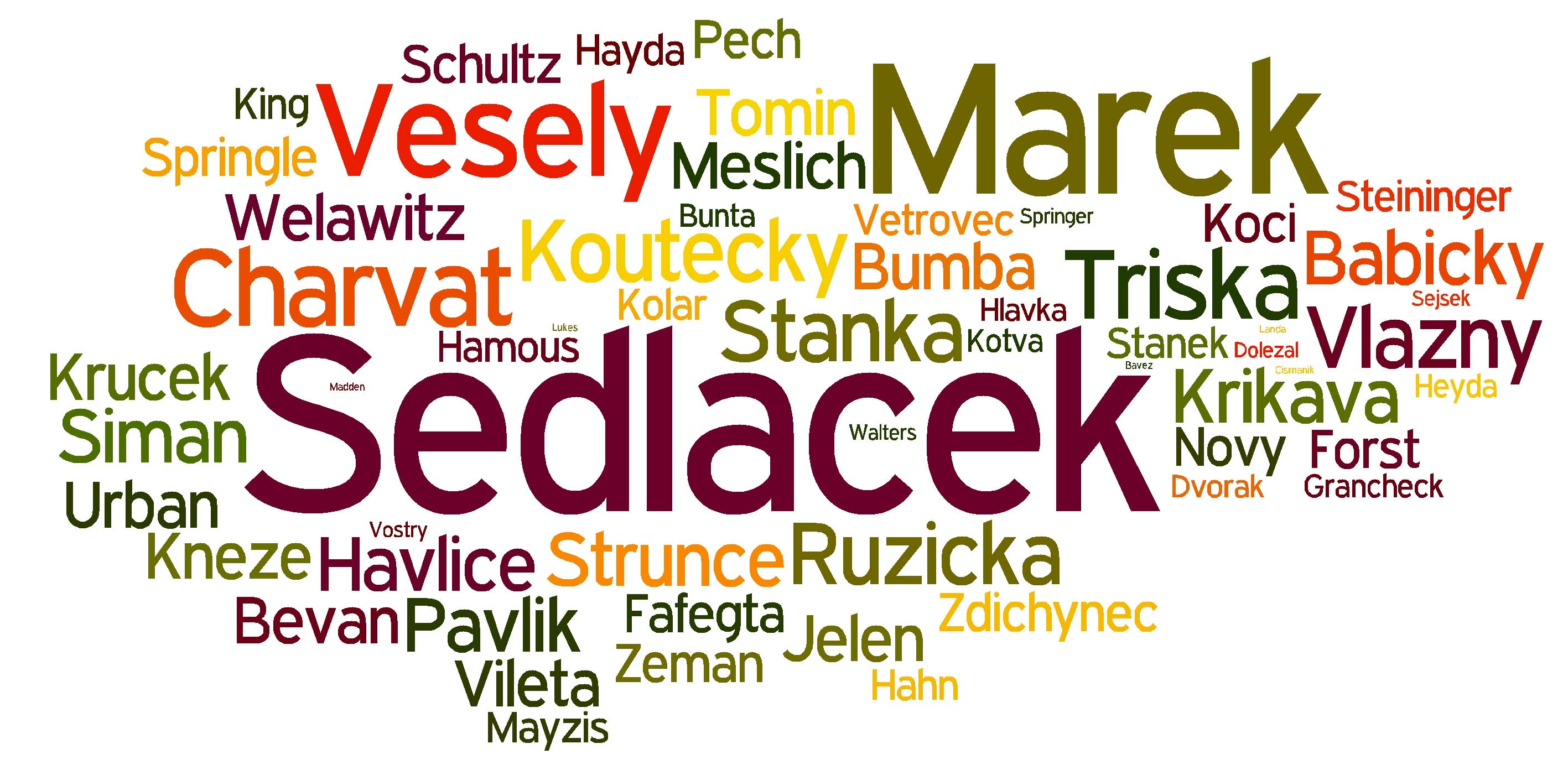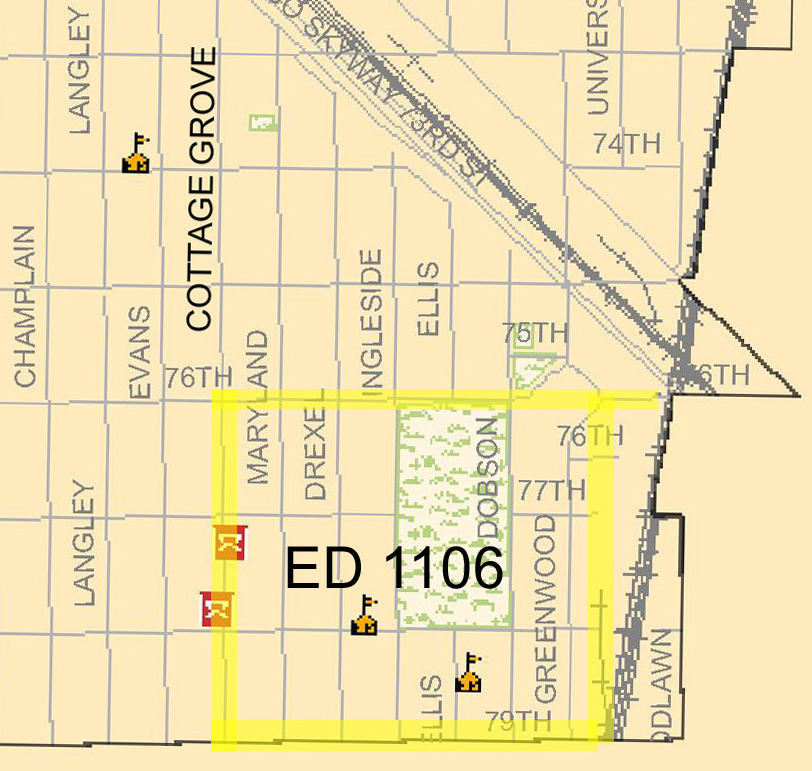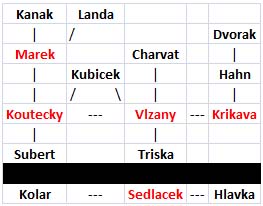|
Introduction to the Chicago Grand Crossing Czech Community Project Web Pages
The town and later the Chicago neighborhood of Grand Crossing took it's name from the crossing of the Illinois Central Railroad tracks with those of the Lake Shore and Michigan Railway at 76th Street near South Chicago Avenue. However, the original name for the town was Brookline and later, briefly, Cornell. It was annexed to the city of Chicago in 1889 as Grand Crossing. (Click here for a history of the communities of this area.)
Starting in the ealy 1880's, about 10 years after the Chicago Fire, Czech immigrants began to move from the area of Praha (Taylor, Dekoven, Bunker, Liberty street area) to Grand Crossing, then still called Brookline. The first definite record found thus far is the 4 Sep 1885 birth of Vlasta Marek at 80 71st Street in Brookline to Joseph & Mary (Kanak) Marek, but the child's uncle Frank Marek had moved to nearby 5712 Wabash in 1883.
By 1900, the Grand Crossing ("na Křižovatce" = "on the crossing" in Czech) Czech community was a stable community that remained stable until the 1950's -- possibly the largest Czech community in Chicago to remain so long where they had settled so early.
In spite of this, histories of the Czechs in Chicago often completely ignore or greatly under-represent this thriving long-lived Czech community. So these web pages are intended to document the community -- in effect creating a documentary reconstruction of the Czechs of the neighborhood.
Like Chicago's Praha and Pilsen neighborhood's, Brookline/Cornell/Grand Crossing was not a purely Czech settlement. Many other immigrant residents -- especially Swedes and Italians but also German, Irish, Canadian and more -- and American-born residents lived in the neighborhood. As a school boy in the 1950's, my friends were Lenny Bloom and Georgeann Nudo, Swedish and Italian-Americans. And I very much liked to go to the Swedish bakery. But it was just as common for my grandmother (born in Grand Crossing in 1893) to meet someone on 79th Street and start a conversation in Czech, even in the late 1950's.
For the purposes of this web site, the information includes only the Bohemian families (and a singleton Hungarian and a singleton Austrian family - and an Irish-American servant girl living in one of the Bohemian households). Perhaps someday, I will expand to a full study of the entire neighborhood. But for now, I will start with the Czechs and limit it to them.
The core of the Czech settlement was in the area from 76th to 79th Streets and from Cottage Grove Avenue east to the Illinois Central Railroad tracks. These were precisly the boundaries of northern part of Enumeration District 1106 of Supervisor District 1 in the 1900 Census. So I have begun the research with the 1900 Census. ED 1106 actually went all the way south to 86th Street, but there were very few residents and no Bohemians south of 79th Street. Even in later years, 79th Street tended to serve as a southern boundary for the Czech community.
As the map above shows, there were two schools (Hirsch High School at 78th and Drexel and St. Francis de Paul Catholic school) and the large Grand Crossing Park. The public grade school was Paul Cornell School at 75th and Drexel, but it was torn down because it was a fire trap with its wooden staircases. The Czechs were almost entirely non-religious or else free-thinkers, glad to be free of what they perceived as the heavy burden of the corrupt Catholic church in Bohemia. (My great-grandfather Petr Koutecky actually through a priest out of their house at 78th and Drexel.) So their baptisms, marriages and burials were either under the auspices of the Bohemian Congregation of Free Thinkers (presided over by Frantisek Zdrubek - a very well known figure in the Czech community of Chicago as a whole -- or else their marriages were by a Justice of the Peace. Their burials were far off to the northwest side of Chicago at the Bohemian National Cemetery, organized by the free-thinkers. Thus their children almost exclusively attended the public schools. The Methodist Church at 76th and Ingleside attracted some of the younger generation in the 1930's. But the Catholic church and school were mostly not attended by the Czech residents.
I would eventually like to identify what brought these particular Czech-Americans together in this community, instead of in the other large Chicago Czech communities (the one spreading west through Lawndale or "Czech California" to Berwyn and Cicero and the one in the area of 55th Street "Back of the Yards"). Had they come from the same communities in Bohemia? To what extent were they related in Bohemia? Clearly some of them had settled elsewhere in the United States, as there are births among them from Iowa, Wisconsin and Ohio. And yet they all came to Grand Crossing -- and mostly stayed there for more than 70 years.
| 


 Send E-mail to wwjohnston01@yahoo.com
Send E-mail to wwjohnston01@yahoo.com